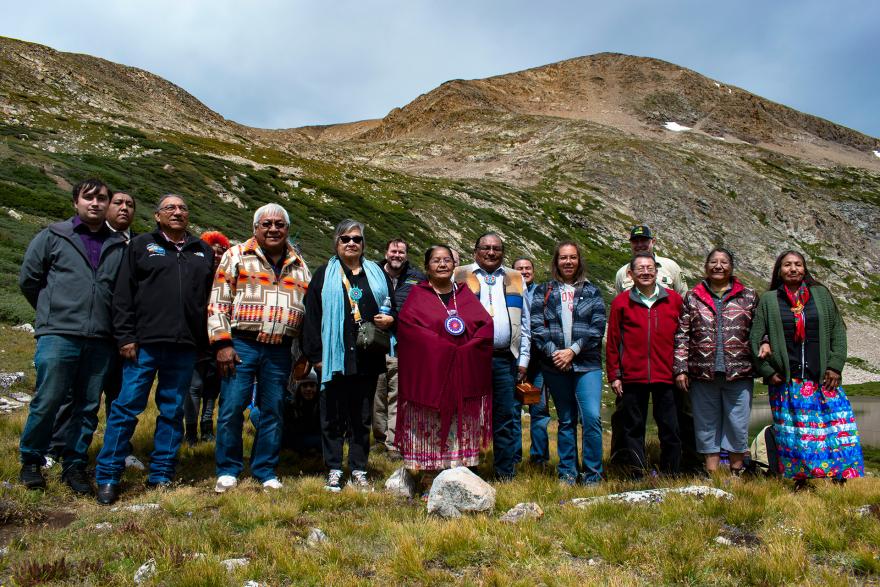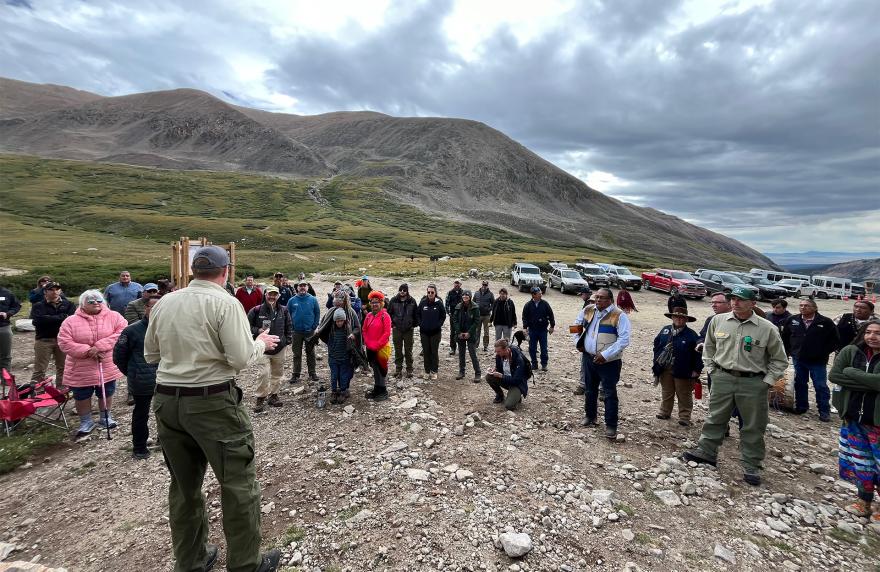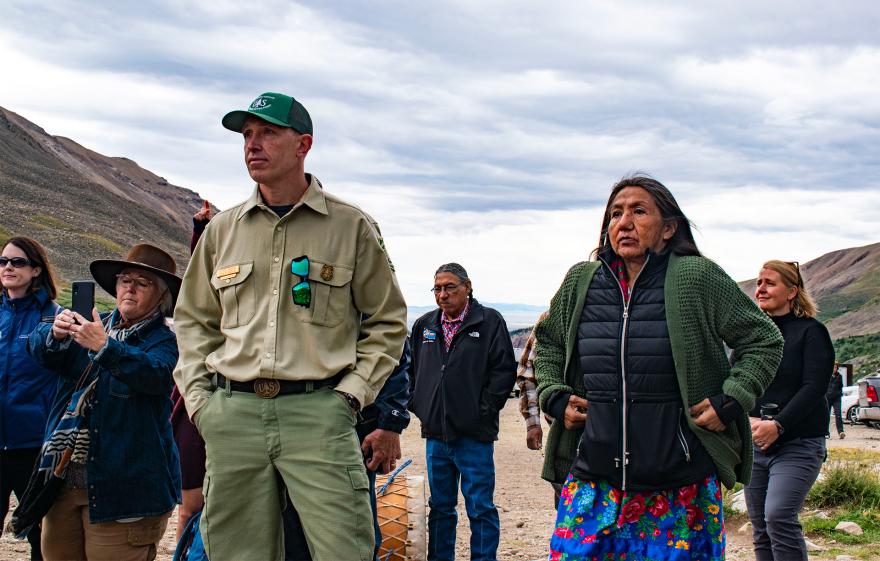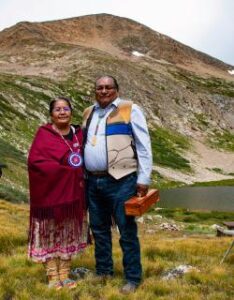Originally published by the USFD

In Colorado, more than 50 American Indian tribes are federally recognized, with deep historical, cultural, spiritual and legal connections to the land. The Pike-San Isabel National Forests and Cimarron and Comanche National Grasslands (PSICC) are making focused efforts to consult, connect and improve relationships with these tribes.
One effort to advance co-stewardship came through the unique tribal blessing for Mount Democrat, a popular Colorado “fourteener,” the term for a mountain whose peak rises above 14,000 feet. Last year, in partnership with The Conservation Fund, the U.S. Department of Agriculture’s Forest Service acquired nearly 300 acres leading to the summit of Mount Democrat in Colorado’s Mosquito Range.
A 2023 Land and Water Conservation Fund grant, “Colorado Peaks and Headwaters,” funded the acquisition. The ongoing project includes money to purchase additional acreage in the surrounding Mosquito Mountains.
Gathering Co-Stewards to Celebrate

To celebrate the new acres, Josh Voorhis, district ranger for the South Park Ranger District where Mount Democrat is located, invited local tribes from the Rocky Mountain Region to participate in a ceremonial gathering on the mountain on Aug. 21, 2024.
Emotions were thick in the air as elders and historians from seven tribes gathered with partner organizations and members of the Forest Service on a crisp August morning. Representatives of the Southern Ute Indian Tribe, Ute Mountain Ute Tribe, Northern Arapaho Tribe, Northern Cheyenne Tribe, Comanche Nation, Kiowa Tribe, and Cheyenne and Arapaho Tribes participated.
“It’s critical that we connect with tribes that call these lands home and invite them into the conversation,” said Voorhis. “As co-stewards of the land, it is important to gather knowledge and experience from all the partners, tribes and communities that are connected to the forest.”

Tribal representatives offered thoughts and prayers for the land and people as attendees and passersby observed quietly, mesmerized by the powerful ceremony. Afterwards, Cassandra Atencio, tribal historic preservation officer for the Southern Ute Indian Tribe, spoke fondly of the ceremony.

“We are glad to be included and that the Forest Service and other federal agencies are thinking about us,” said Atencio. “They recognize that tribes have also been here and that these areas are very important to us. We like to do this because it maintains that connection and brings us back to those places where our ancestors once were. So, spiritually, it’s a home-felt feeling and a sense of belonging.”
The importance of active co-stewardship echoed among ceremony participants.
“I am always surprised by the amount of Traditional Ecological Knowledge that is passed down,” said Juwan Willow, a tribal cultural specialist for the Northern Arapaho Tribe. “There is a lot of information that these tribes have, and they would be a lot more willing to share and find best practices for this knowledge if they were more involved.”
Strengthening Relationships through Action
Another big step for the PSICC in strengthening tribal ties was hiring Tribal Relations Specialist Dr. Jason Herbert. Herbert recently graduated from the University of Minnesota with a Ph.D. in American history, with a focus on Indigenous and environmental history. Prior to joining the Forest Service, he served both the Seminole Tribe of Florida and the Eastern Band of Cherokee Indians. Hired in the summer of 2023, Herbert recognizes the responsibility he holds in this new position.

“What I discovered in serving with the Seminole Tribe of Florida and the Eastern Band of Cherokees, and the experiences I had under their leadership and mentorship, was I really love working with tribes,” said Herbert. “I had the opportunity to teach at a university, but I made the difficult decision to move over 2,000 miles from home to work here. And I did that because I wanted to be in a position of service. Not only for the American taxpayers and citizens but, more importantly, to the tribes that call Colorado home.
“The work of improving relationships between tribes and the Forest Service is an ongoing process. The Forest Service publication of ‘Strengthening Tribal Consultations and Nation-to-Nation Relationships’ (also known as the “Tribal Action Plan”) is an important first step,” he continued.
“However, the dedication and implementation of the programs and practices within that document are what the Forest Service must continue its commitment to achieving,” said Herbert. “What we are trying to do is create a more inclusive nature to all of our forests and grasslands.”
PSICC employees respect and learn from Indigenous people’s wisdom and knowledge. They work hard to be better partners in caring for the beautiful natural lands they manage together.
For more information on the Forest Service’s “Tribal Action Plan,” visit the Forest Service Office of Tribal Relations website.
